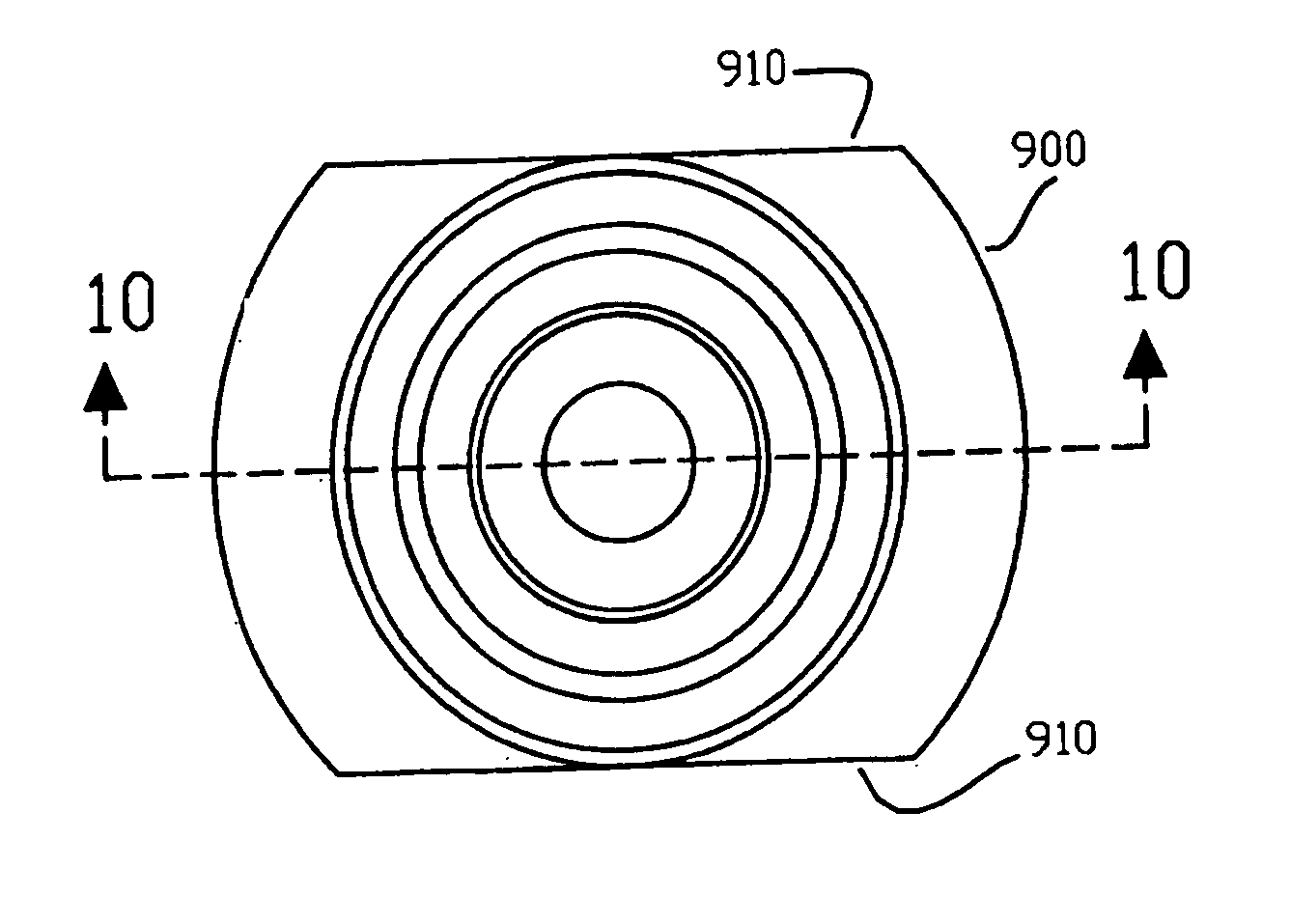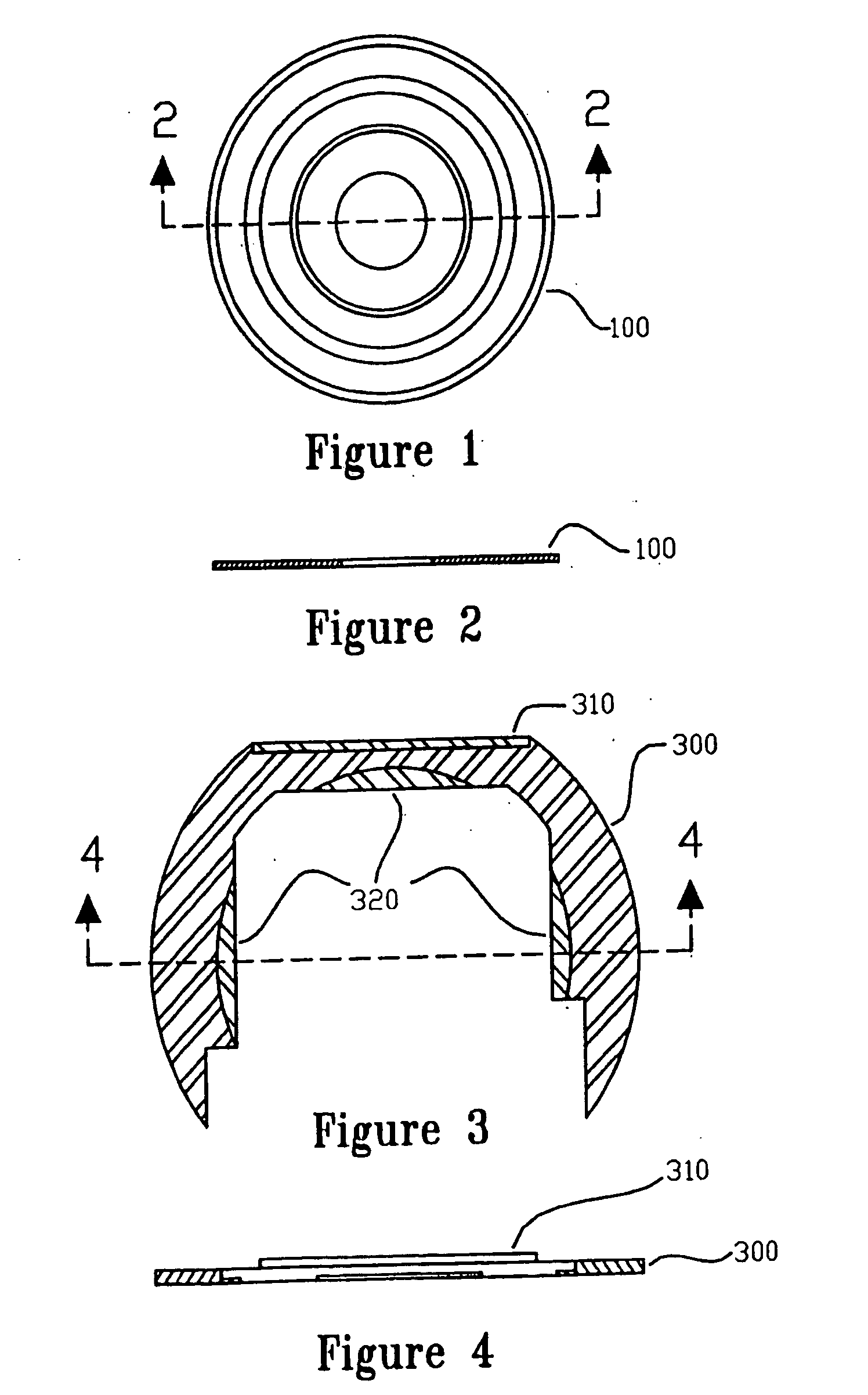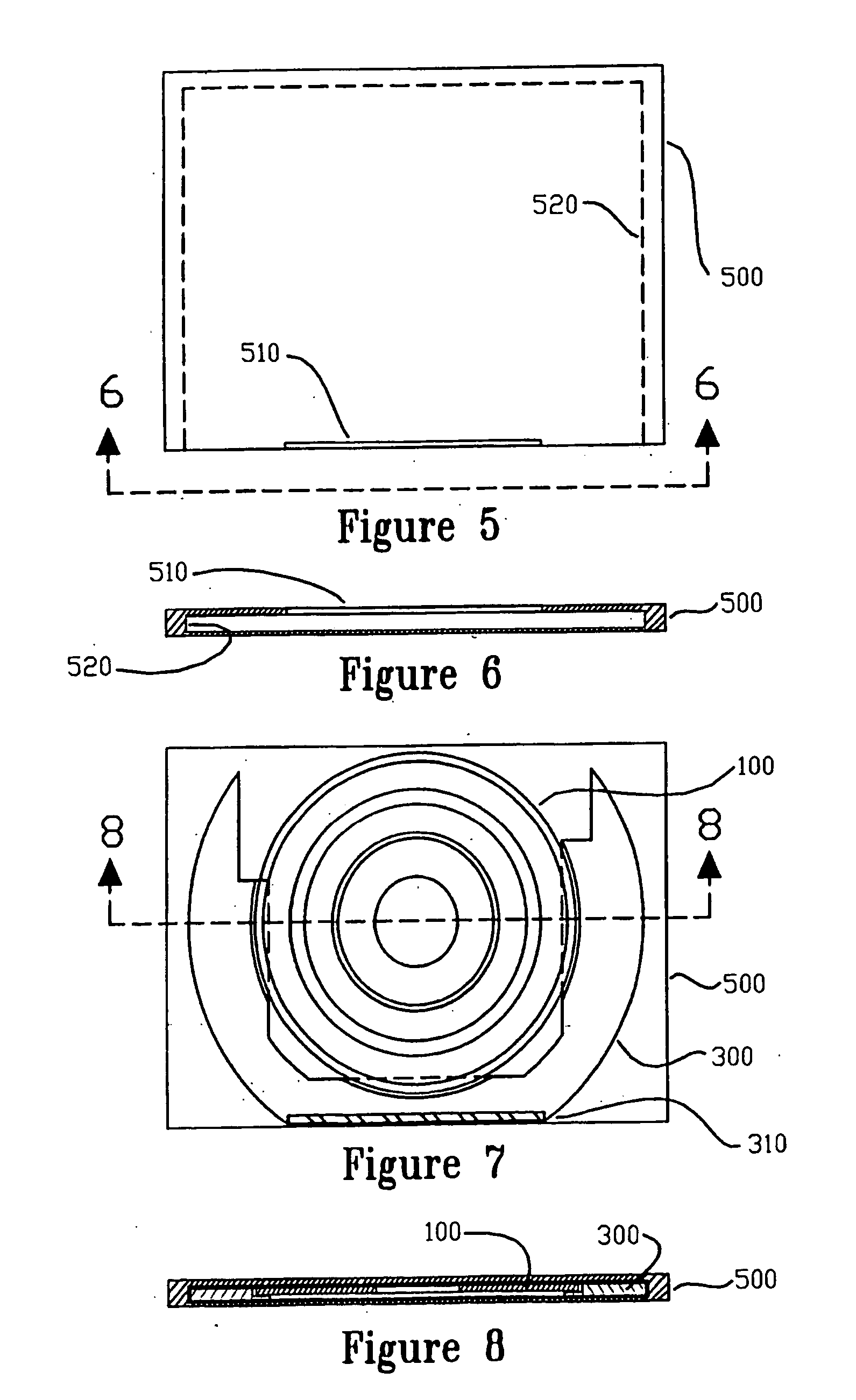CD card
a technology of compact discs and cards, applied in the field of compact discs, can solve the problems of not being readily acceptable for collectors, business cards, and large cd-roms, and achieve the effects of not being able to fit in standard baseball card holders, drawers, or shelving, and not being able to accept discartTM devices
- Summary
- Abstract
- Description
- Claims
- Application Information
AI Technical Summary
Benefits of technology
Problems solved by technology
Method used
Image
Examples
first embodiment
[0051]FIG. 1 is a top plan view of the small compact disc of the present invention. Disc 100 uses the same technologies, materials, and data standards as does the standard 12 or 8 cm CD, with the only significant exception being that its outside diameter is substantially smaller than a typical prior art 8 or 12 cm compact disc. In the preferred embodiment, the disc is approximately 5.5 to 6.35 cm in diameter.
[0052]FIG. 2 is a cross-section taken along lines 2-2 of FIG. 1, illustrating a cross-sectional view of disc 100.
[0053]FIG. 3 is a top plan view of an adaptor of the first embodiment of the present invention. Adaptor 300 may be substantially “C”-shaped having an outer diameter of approximately 8 cm. Adaptor 300 may be provided with lands 320 which may be adapted to received the disc 100 when it is placed upon lands 320. Adaptor 300 may also be provided with a ridge 310, the function of which will be described below.
[0054] Note that adaptor 300, although adapted to approximatel...
second embodiment
[0061]FIG. 9 is a top plan view of the present invention of a small compact disc 900. Disc 900 may be provided with a nominal diameter of approximately 8 cm, but having substantially parallel portions 910. The distance between substantially parallel portions 910 may be approximately 5.5 to 6.35 cm. Data may be written into that portion of the disc having a diameter less than the distance between substantially parallel portions 910. Although disc 900 is not round (as with disc 100), unlike prior art rectangular discs, disc 900 is smaller with a greater percentage of the edge of the disc being circular and thus making it more aerodynamic, easier to balance, and simpler to align in the depressed portion (8 cm diameter circle) of the compact disc reader tray. Disc 900 may optionally be provided with balancing weights (not shown) in the form of denser or thicker portions which may serve to dynamically balance disc 900.
[0062]FIG. 10 is a cross-section taken along lines 10-10 of FIG. 9.
[0...
third embodiment
[0066]FIG. 15 is a top plan view of the present invention of the small compact disc. Disc 1500 is similar for all intents and purposes as disc 100 of FIG. 1.
[0067]FIG. 16 is a cross-section taken along lines 2-2 of FIG. 15.
[0068]FIG. 17 is a top plan view of the third embodiment of the present invention illustrating an adaptor. The adaptor of FIG. 17 differs slightly from that of FIG. 3 in that the overall adaptor does not have rounded edges. Rather, raised edges 1710 are provided at a diameter approximately 8 cm across the center of adaptor 1700. Raised edges 1710 may rest inside a depressed portion of a CD-ROM drive designed to accommodate 8 cm discs. Disc 1500 may be carried on adaptor 1700 on lands, such as lands 320 shown in FIG. 3. In the alternative, adaptor 1700 may merely center disc 1500 and thus not actually carry or be in contact with disc 1500.
[0069]FIG. 18 is a cross-section taken along lines 4-4 of FIG. 17, illustrating the shape of raised edges 1710.
[0070]FIG. 19 ...
PUM
| Property | Measurement | Unit |
|---|---|---|
| diameter | aaaaa | aaaaa |
| diameter | aaaaa | aaaaa |
| diameter | aaaaa | aaaaa |
Abstract
Description
Claims
Application Information
 Login to View More
Login to View More - R&D
- Intellectual Property
- Life Sciences
- Materials
- Tech Scout
- Unparalleled Data Quality
- Higher Quality Content
- 60% Fewer Hallucinations
Browse by: Latest US Patents, China's latest patents, Technical Efficacy Thesaurus, Application Domain, Technology Topic, Popular Technical Reports.
© 2025 PatSnap. All rights reserved.Legal|Privacy policy|Modern Slavery Act Transparency Statement|Sitemap|About US| Contact US: help@patsnap.com



